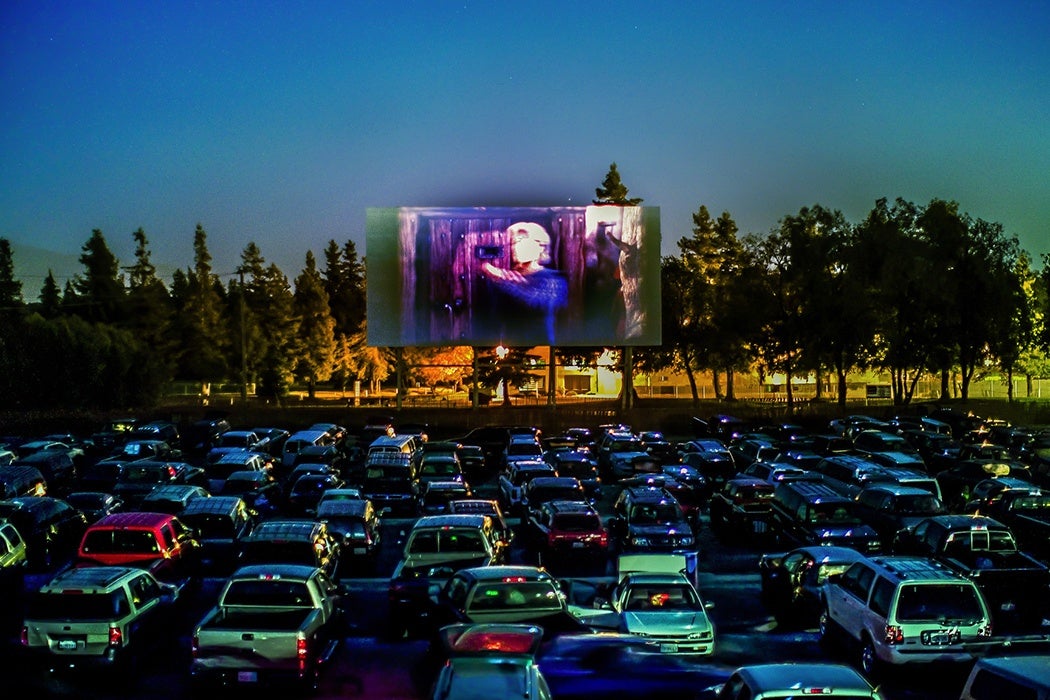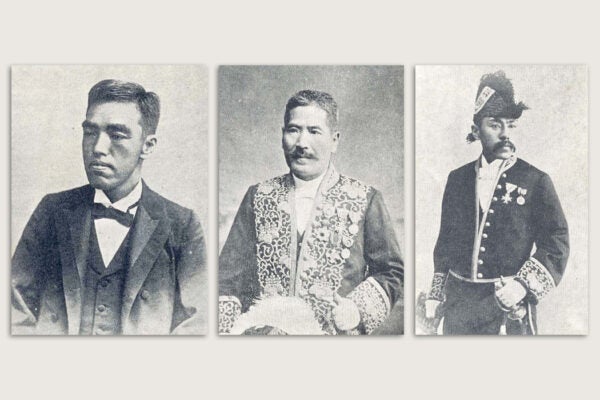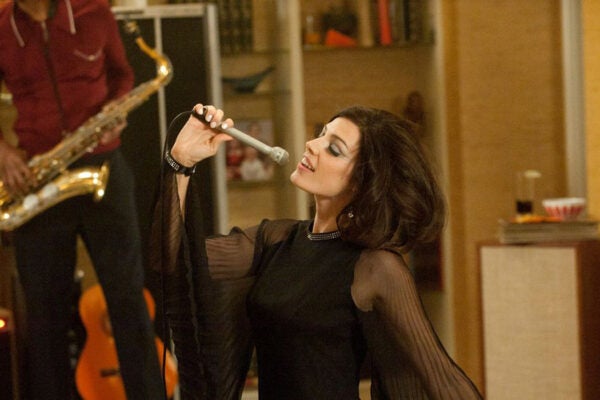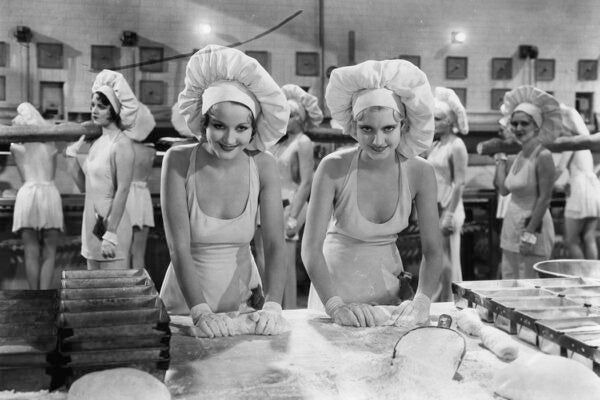Today, you’d be hard-pressed to find an operational drive-in theater—only a handful still exist. The rest have become parking lots or been reclaimed by urban developers, a decline that obscures the central role they once played in American entertainment. But what was that role, anyway? As Mary Morley Cohen writes, drive-ins were much more than movie theaters.
Drive-ins were born at a time that Cohen calls “a watershed in American film history.” As Hollywood’s golden age ended, studio monopolies did too. Simultaneously, audiences moved from cities to suburbs. Drive-ins embodied those changes and created an entirely new way of watching the movies. No longer did audiences have to sit in fancy movie palaces where silence was golden. “At the drive-in, spectators could smoke, eat, talk, and make out.” This harkened back to older audience practices common during the vaudeville era. Like old-school fairgrounds, exhibition halls, and nickelodeons, drive-ins offered a variety of activities, from the main event movie to dance floors, contests, and even fireworks.
This informal, carnivalesque atmosphere lent itself to a strange combination of socialization and isolation. Outside of the car, attendees could mix and meet new people. Inside, they enjoyed privacy and a viewing opportunity that had more in common with the living room than the movie palace. Cohen sees that in-car experience as a transition to television—a shift that, ironically, did away with moviegoing to a large extent. Those cultural changes took place within a broader context of postwar migration and a growing middle class.
Drive-ins also appealed to a new audience—a mixed bag of viewers of different classes, neighborhoods, and races. In that respect, they were revolutionary. They were some of the South’s first integrated sites, and African-American moviegoers felt more safe and respected there than in the dirty balconies of Jim Crow movie theaters. Obese and disabled people, housewives and children, and working-class families also flocked to drive-ins. This sense of mixing, writes Cohen, created anxiety among cultural and business leaders and a perception of the movie theaters as “passion pits” where anything could happen.
Weekly Digest
That negative reputation created issues for drive-in owners, who had to prove to movie distributors that their facilities were part of the mainstream. Hence, squeaky-clean marketing featuring white families engaged in wholesome fun and local laws that cracked down on “immoral” behavior like drinking and making out.
Nevertheless, drive-ins were increasingly punished by distributors and prevented from screening first-run films. This perpetuated drive-ins’ reputation as B movie destinations and led to their eventual fall from popularity. Home video, cable, and fancier movie theaters did the rest—but for anyone who’s ever seen a drive-in, there’s still something special about the very particular spectacle of a now nearly forgotten way of watching movies.







